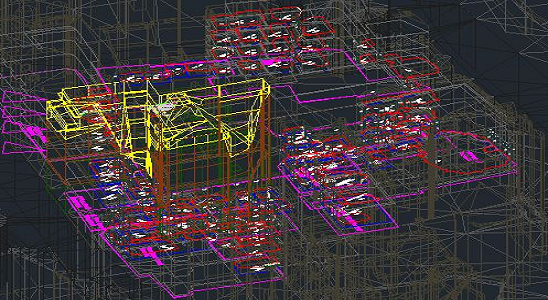Understanding Rights to Light: Key Facts to Be Aware Of

In the world of real estate construction, grasping the subtleties of right to light is vital for both parties, including developers and homeowners. A right to light survey is a key resource that assesses how much natural light enters a property and whether suggested projects will trespass on these entitlements. As explanation continue to develop and increase, the implications of right to light have become increasingly relevant, affecting planning permissions and building strategies.
Managing the complexities of light rights issues can be daunting, especially for those unfamiliar with the regulations governing them. By learning about the historical and legal basis for right to light in the UK, as well as when and how to conduct a natural light survey, participants can sidestep financially draining conflicts and guarantee their projects are compliant with existing regulations. This write-up aims to explain the procedure and emphasize the significance of light rights assessments in upholding a balanced balance between development and the entitlements of nearby properties.
Grasping Right to Light
Right to Light is a legal entitlement that allows a property owner to receive a particular quantity of natural light through their windows. This right is not absolute but can be established through established use and can significantly influence property development and neighbor relations. Grasping this right is crucial for both developers and homeowners, as it can impact how buildings are positioned.
In the UK, Right to Light is generally recognized under statutory law and has developed through various legal cases. The right can be obtained if a property has enjoyed unobstructed light for a continuous period of 20 years, which can lead to potential legal challenges in urban areas where space is scarce. Knowing the jurisprudential framework surrounding this right is crucial for anyone involved in property development to avoid disputes and ensure compliance with planning regulations.
Developers must be proactive in considering Right to Light during the initial phases of planning and design. Failing to adequately address this issue can lead to costly outcomes, including legal actions that may stop or modify development projects. By comprehending the effects and how to appropriately assess light rights, developers can create plans that respect neighbors' rights while still optimizing the capabilities of their own properties.
Regulatory and Compliance Issues

Grasping the legal and compliance aspects of right to light is vital for land developers. The Right to Light is primarily originating from common law and is recognized in legislation in the UK. Property owners may argue a right to light if they have received light through designated apertures for a certain period, typically 20 years. This entitlement can lead to complications, especially when developments are proposed that could infringe on current rights. Familiarity with regional laws and case precedents is crucial, as regional differences may influence how rights are understood and enforced.
Failure to consider right to light issues during the planning process can lead to expensive disputes and setbacks. Developers often fail to appreciate the importance of conducting thorough right to light evaluations early in their projects. By doing so, they can reduce risks connected with legal challenges from neighbors or the local authority. Legal experts can assist in interpreting the implications of any current rights, as well as in navigating the planning approval process to prevent future litigation.
Moreover, the possibility for legal solutions in cases of infringement is a significant compliance issue. If a right to light is breached, property owners have the right to seek injunctions to stop construction or changes that would block their light. Moreover, compensation may be requested for lost rights, making it vital for developers to understand how their actions could impact neighboring properties. Engaging with right to light specialists not only supports compliance but also promotes harmonious relationships with the community, ultimately fostering smoother developments.
Survey Process and Case Analyses
The process of performing a Right to Light survey begins with an preliminary assessment of the location and its surrounding environment. This usually involves acquiring details about current structures, their elevations, and spaces from neighboring properties. Then, surveyors employ tailored tools and software to analyze sunlight access and any potential impacts on neighboring properties. This analysis often entails creating detailed daylight and sunlight reports that specify how much natural light is available and whether any planned developments could encroach on a neighbor's right to light.
In a notable case related to urban development, a developer sought to construct a high-rise building in a highly populated area. A Right to Light survey revealed considerable potential obstructions to light for neighboring buildings, prompting the developer to modify their plans. By partnering with surveyors and legal experts, they were capable of adjusting the design to lessen the influence on light access while still attaining their project goals, illustrating the importance of thorough assessments in the initial phases of the planning process.
Another case showcased the challenges met by developers when addressing Right to Light issues related to historical buildings. When a modern extension was proposed adjacent to a heritage site, neighbors raised concerns over light infringement. The conducting of a detailed Right to Light survey turned out to be essential in this scenario, as it helped to balance the light rights of the current historic structure with the need for new development. Through strategic alterations to the design, the developer was capable of gaining approval while honoring the established rights, illustrating the critical role of Right to Light assessments in navigating complex planning landscapes.
